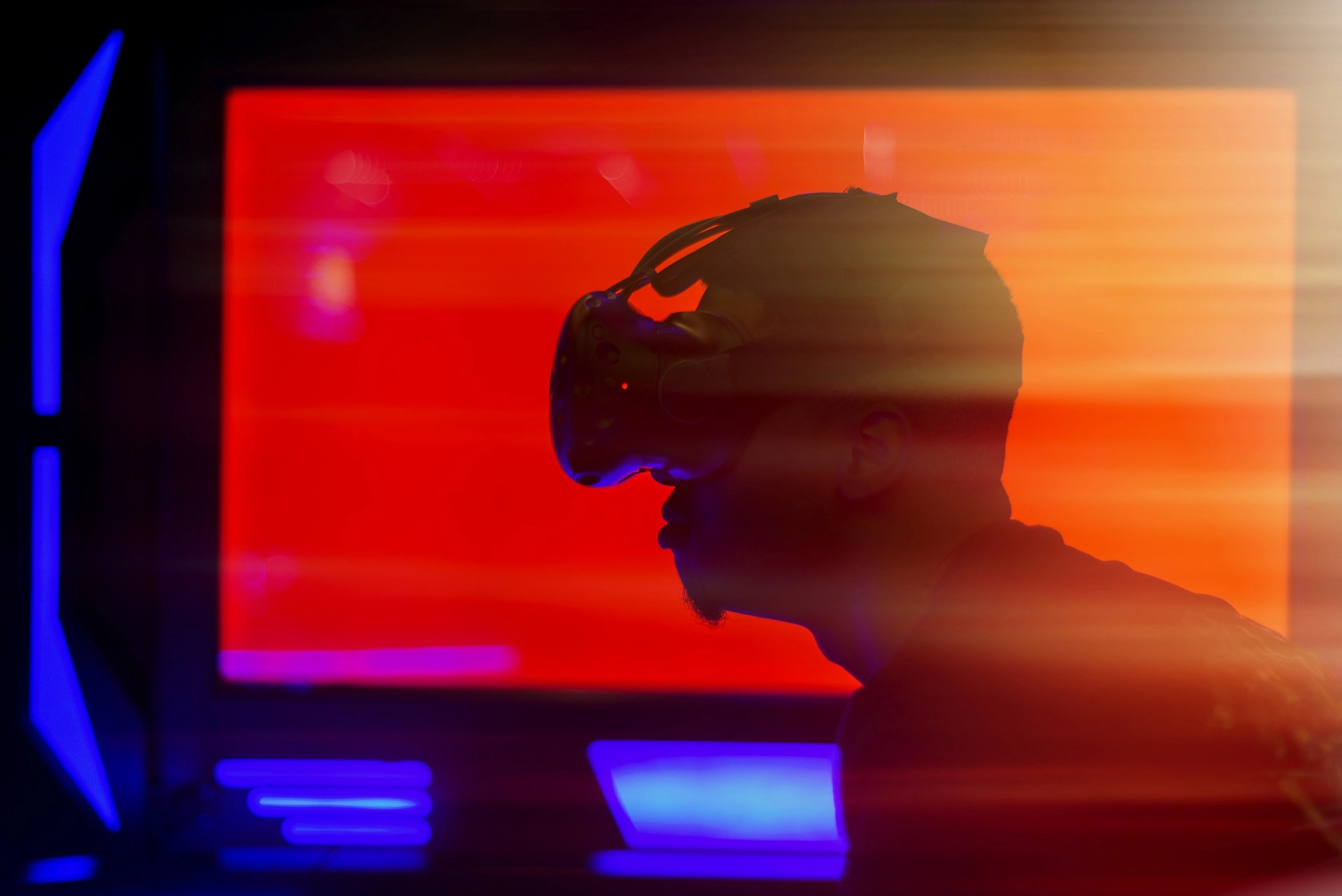WHAT IS VIRTUAL REALITY?
Virtual Reality (VR) is being able to be inside a computer-generated environment with three dimensional scenes and objects that appear to be real, making the user feel they are immersed in their fully 3D surroundings. This environment is perceived through a device known as a Virtual Reality headset/helmet or HMD (head-mounted display). VR allows us to immerse ourselves in various forms of software such as video games as if we were one of the characters, or to learn how to perform heart surgery or improve the quality of sports training to maximize performance etc. The real world applications are endless, from physical therapy, visiting far off destinations, and getting to experience LIVE real world events such as concerts, sports, cinema, and more.
Just a Passing Fad?
Valve (which develops video games and software) each month collects info from their platform users to determine some baseline statistics about what kind of hardware and software is used by the platform’s population, including the use of VR headsets. Data shared in a recent survey represents the number of headsets connected to the “Steam” gaming platform over a given month, so we call the resulting figure ‘monthly-connected headsets’ for clarity; it’s the closest official figure there is to ‘monthly active VR users’ on Steam, with the caveat that it only tells us how many VR headsets were connected not how many were used. The latest figures for the month of July show that 1.93% of Steam users had a VR headset connected to their PC over the course of the month, which is actually the highest the percentage of VR users on Steam has ever been.
To put this into perspective, Steam users with connected VR headsets are about twice as common as those using Linux, and a little more than half as common as those using Mac.
Take a good Look at Oculus, more precisely the Oculus Quest. When the global lockdown wen into effect you were unable to find one of these in any way shape or form aside from giving in to price gouging from re-sellers. Another great point, Quest – it made up around half of all VR headset sales in 2019, and has been a runaway success for Facebook’s Oculus. The fact it can get 6% on Steam (which is now a rival platform), even though using the Quest on PC requires a high-end PC and an Oculus Link cable, is massively impressive.
Mobile (Phone VR is dead) a sign? YES
The decline of Mobile VR. Oculus discontinued the Go’s commercial usage in favor of the Quest, and Google discontinued Daydream… that must mean the VR Apocalypse is here, right? Not quite. SuperData's figures show mobile hardware sales have decreased, but overall VR sales increased between 2018 and 2019. The figures don't show that Mobile VR fell out of popularity, they show the hardware sales were absorbed by the Quest's massive success – why strap a phone to your face when you have a full, motion-tracked Quest available?
Things to Come
Virtual Reality is one of the technologies with the highest projected potential for growth. According to the latest forecasts from IDC Research (2019), investment in VR and AR will multiply 21-fold over the next four years, reaching 15.5 billion euros by 2022. In addition, both technologies will be key to companies' digital transformation plans and their spending in this area will exceed that of the consumer sector by 2020. It is, therefore expected that by 2021 over half of the larger European companies will have a VR and RA strategy. While the Quest was clearly the most exciting VR device of 2019 (the $1,000 Valve Index is also cool but only meant for hardcore enthusiasts), it's already looking like a killer product for holiday 2020. Oculus Link, which is currently available as a “tethered” feature, will let you use the Quest as a standard PC VR headset. That means if you've got a gaming PC around, all you have to do is plug it in to play high-end VR.
The Future is VR
Nowadays, the market is demanding applications that go beyond leisure, tourism or marketing and are more affordable for users. Virtual interfaces also need to be improved to avoid defects such as clipping, which makes certain solid objects appear as though they can be passed through. Or to minimize the effects that VR produces in people, among them motion sickness, which consists of a dizziness induced by the mismatch between the movement of our body and what is being seen in the virtual world. The big technology companies are already working to develop headsets that do not need cables and that allow images to be seen in HD. They are developing Virtual Reality headsets in 8K and with much more powerful processors. There is even talk that in the next few years they could integrate Artificial Intelligence. The latest 5G standard can also provide very interesting scenarios for the evolution of VR. This standard will allow more devices and large user communities to be connected. In addition, its almost imperceptible latency will make it possible for consumers to receive images in real time, almost as if they were seeing them with their own eyes.
All this means that Virtual Reality is no longer science fiction. It is integrated into our present and, in the coming years, it will lead to advances that will shape the future.


